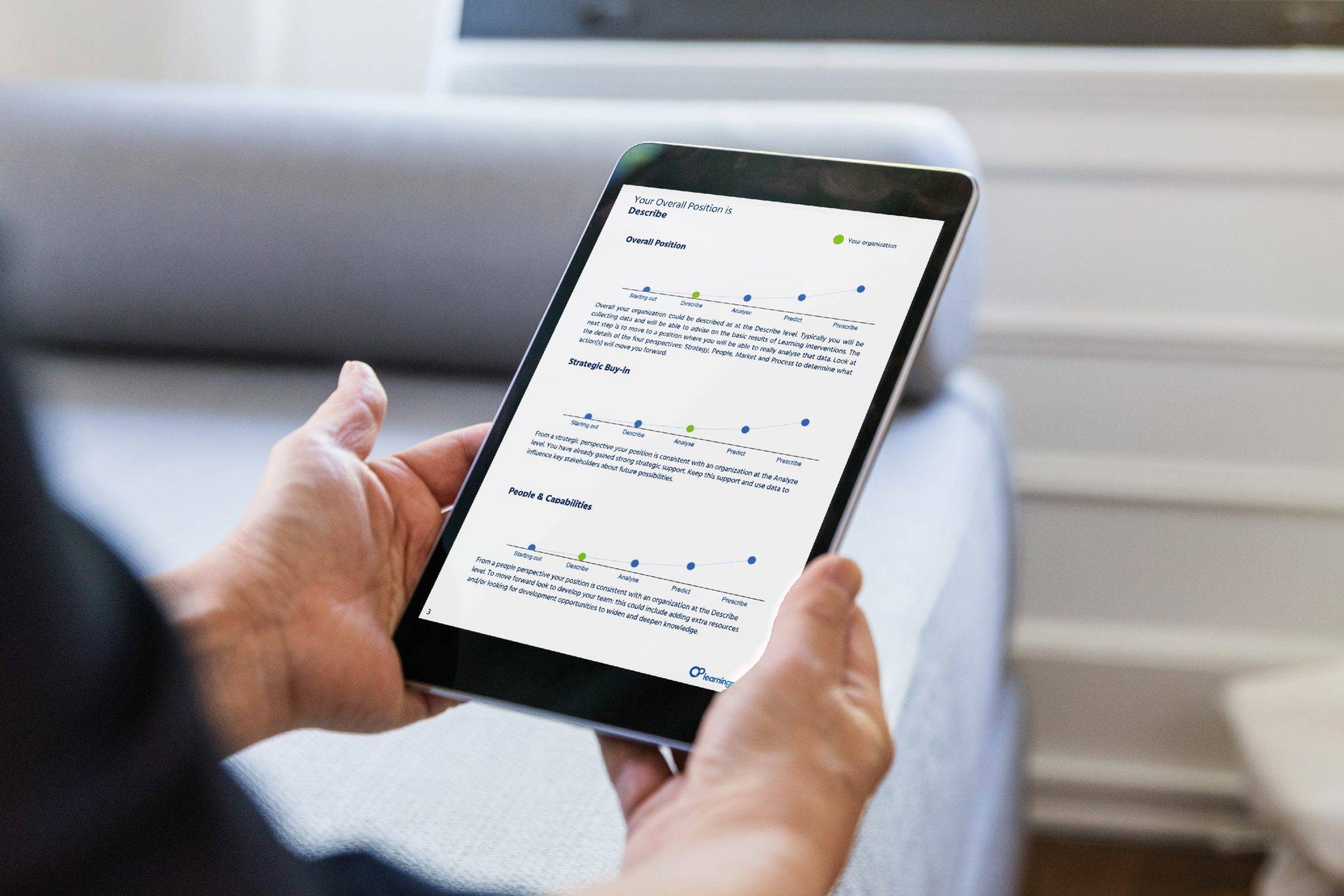
Introducing the Learning Analytics Maturity Model: Are you behind the pack when it comes to Learning Data?
September 8, 2020
Each year Donald H. Taylor presents the learning industry with a simple survey; What’s hot in L&D? Over the course of a few weeks he gets thousands of responses from around the world leading to a ‘top 10’ trends each year. This year’s winner: Learning Analytics.
From time to time it can feel like we are operating a few steps behind ‘what is hot’. The trends say every other company is doing something, but perhaps you aren’t. Or perhaps you are but you don’t realise just how advanced you are compared with your peers. Surveys say Learning Analytics is ‘hot’, but what’s the truth behind that statement?
The Learning Analytics Maturity Model (LAMM)
As a means to better understand where organisations are in their journey to make use of Learning Analytics we’ve brought together a simple diagnostic that you can take in about 10 minutes to diagnose where you are on your Learning Analytics journey. We call it the Learning Analytics Maturity Model. We trialled the approach with a range of our existing customers over the summer and it’s proven really useful as part of L&D strategy formulation and to help make the business case for more investment in data within the learning department. So now we’re opening it up to everyone, no obligation, free to take.
Having taken the diagnostic, our data boffins can deliver you a handy 6 page PDF report of where you sit in the ‘Learning Analytics Maturity Model’. You can take the diagnostic right now to find out where on the journey your organisation sits. Or read on to find out more about the rationale behind the Learning Analytics model…

What is your goal in collecting learning data?
Our basic Learning Analytics model is adapted from Donald Clark’s new book, Artificial Intelligence in Learning, Chapter 14: Data Analytics.
In this chapter, Donald describes an evolving schema that has proved useful in a range of sectors to help us focus our Learning Analytics efforts towards a specific goal.
The schema has four levels; Describe > Analyse > Predict > Prescribe.
- Describe: What does the learning data tell us about what things are happening?
- Analyse: What does the learning data tell us about why things are happening?
- Predict: What does the learning data tell us that is likely to happen?
- Prescribe: What does the learning data tell us that should happen?
To this list, we can add a fifth – Starting Out. Whilst not a goal in itself, there is a certain aspirational quality to being at the ‘starting out’ end of the scale and we can suggest that first, you must consider why you’d want to use Learning Analytics at all. The requirements and complexity of what is trying to be achieved accelerates significantly as you go up through the schema; those companies whose goal is to Prescribe actions and interventions based on data are at the very top end of what can be achieved.
Don’t worry… It’s not all about the technology
Learning Analytics isn’t just about technology. It’s about the people and capabilities that you have in the company, it’s about how aware you are of what’s possible and why you would even bother doing it and it’s about executive buy-in; does your company value data?
The Learning Analytics model is designed to measure this. If you’ve got talented people who are data savvy, but technology poor, you are in a different position to someone with no capabilities in the team at all.
Of course it keeps coming back to the goal; if you aspire to recommend learning experiences based on data, then you will seriously need to look across each aspect of the diagnostic and consider how you can start a path forward. But if you just need to know more about what is happening with the learning you already provide, your end goal might be closer than you think.
Take the Learning Analytics diagnostic today to find out where your organisation sits
The diagnostic is designed to be taken by internal L&D or HR team members, operating inside an organisation of some scale (>250 people) with an interest in Learning Analytics. It will take about 10 minutes to complete. We’ll ask questions about your tech, your people and your aspirations. The response isn’t instant; it takes us a couple of days to turn around the diagnostic with specific feedback for where you currently rank, what you might look to improve first and how Learning Pool can help you on your journey. Your response is personal to you and we won’t ever publish anyone’s individual diagnosis, nor reveal your company’s name. For further reading, why not down our recent CLO snapshot, or our Adding data and learning analytics to your organization whitepaper.
Got a learning problem to solve?
Get in touch to discover how we can help


